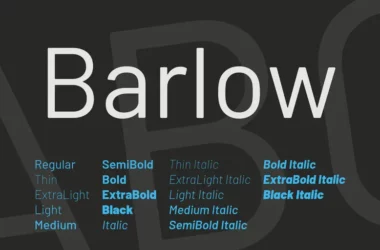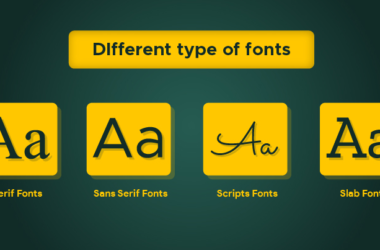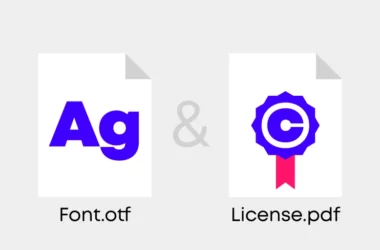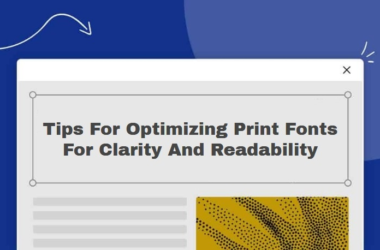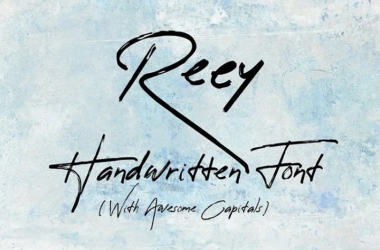The Psychology Of Font Choice In Branding
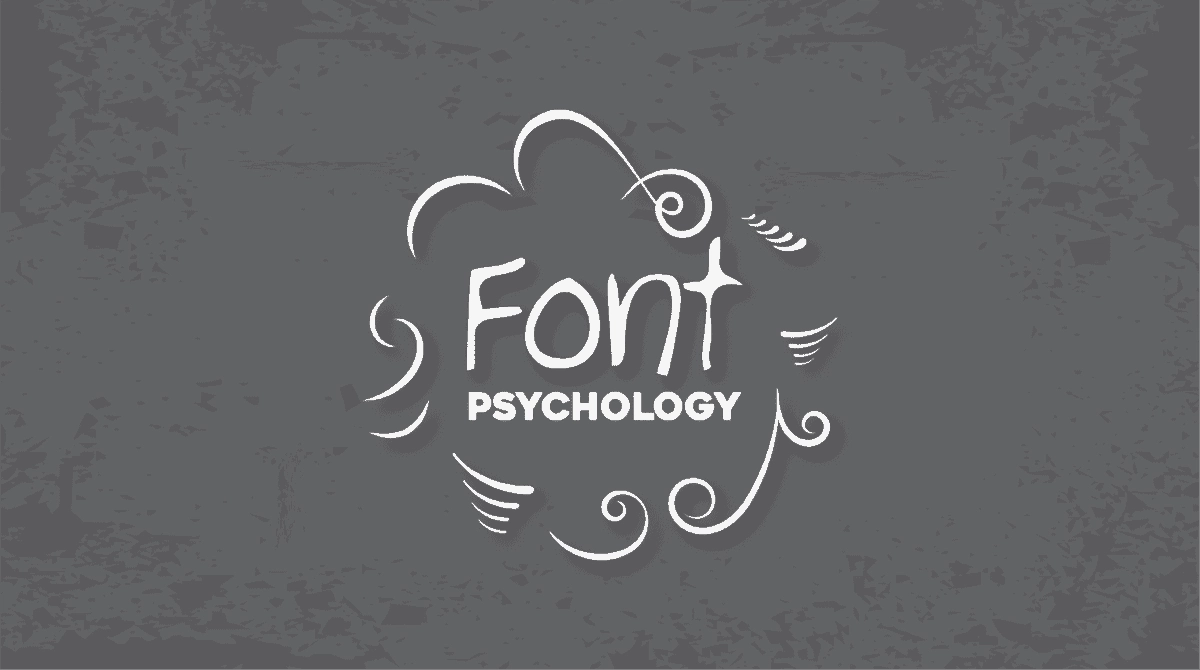
Introduction
Understanding the psychology behind font choice in branding can be an invaluable tool for businesses in order to stand out from the competition and make a lasting impression on consumers. It can help to better express a company’s identity, as well as evoke certain emotions which are essential elements of successful branding.
Different fonts contain their own aesthetic feel and values that enable companies to get across a message to their target audience, whether it is modern, reliable, or bold. When used properly, fonts also provide an additional opportunity for businesses to personalize and differentiate themselves from others. Choosing fonts carefully ultimately serves as an effective way of communicating with customers and creating a strong bond with them.
The Importance Of Branding In Business
Branding plays a crucial role in the success of any business. It helps to establish and promote an identity that customers can relate to. When done correctly, branding can create more than just recognition it can generate loyalty, drive sales, and set businesses apart from their competitors. Branding is not only about appearances, it also involves aspects such as customer service and product quality.
Ensuring that all facets reflect a positive image of the company helps create confidence in customers and boosts reputation. An effective branding strategy is invaluable for companies looking to stand out among the competition and grow their brand into a successful business for many years to come.
The Role Of Font Choice In Branding
Font choice is an important part of every brand’s visual identity and making sure the correct one is chosen can be the difference between success and failure. Without the right font, your brand message could easily get lost in all the noise and competition out there. An effective font should reflect the tone of your brand’s voice and create an emotional connection with your target audience.
Depending on what kind of company or product you’re promoting, you may need to opt for traditional fonts that evoke timelessness or modern fonts that are edgy and trendy. It’s important to strategically pick fonts that not only capture who you are as a company but also make your message easier to read, recognize and remember for consumers.
The Psychology Behind Font Choice
Choosing a font for any project is more than just making a design choice. In fact, the psychology of font selection is based on how we process fonts subconsciously in order to determine what type of message the words are conveying.
For example, an intricate and decorative font may give a feeling of sophistication, or it could be seen as overly complicated and busy. A minimalist sans-serif font may come off as modern and clean, but easily could be seen as plain instead. Being aware of the psychological power behind various fonts is important when designing logos, presentations, books, or any other medium that requires text, it’s equally important to select the right font to get your message across effectively.
Different Fonts Evoke Different Emotions And Associations
Fonts can be powerful tools to persuade readers and draw attention to words. Different fonts evoke different associations within a reader, for example, some people might associate a bold font with confidence, while others could think of it as aggressive. Even small changes in typeface can create an entirely new connotation, the same sentence written in a serif font may appear more formal than the same sentence written in a sans-serif font.
Many people are unaware of how fonts can affect the way content is perceived, so it’s important to consider how different fonts influence messages when crafting communication. With the huge variety of fonts available, you should experiment to find which ones best fit your needs and help send the right message.
Serif Vs. Sans Serif Fonts
When it comes to typeface selection, there are two distinct choices serif and sans-serif fonts. Serif fonts are defined by the tiny decorative lines that appear at the ends of each letter, giving them a font more traditional than their sans-serif counterparts. Sans serif fonts, on the other hand, lack these serif embellishments, making them look much cleaner and modern.
This creates a divide between people who prefer the classic style of serif typography, versus those who like bolder sans-serif texts. Ultimately, no single font can be better for all situations, but if you choose your font carefully it could help you create an identity for your project and differentiate it from the competition.
How Font Choice Affects Readability And Credibility
Font choice is an important element of communication. Picking the right font can have a major impact on how your message is received by readers. Clear, legible fonts are easier to read and make a message more believable, while fancy fonts can distract the reader or appear unprofessional.
Font size is also important most readers respond better to content with at least 12-point font, which allows greater clarity without overloading the page with text. Getting the details right can help influence public perception and make a lasting impression on recipients. Choosing the proper font goes a long way in making sure your message makes its mark.
Case Studies Of Successful Font Choices In Branding
Using the right font in a brand’s visual identity can be crucial for its success. Without a font, a logo cannot communicate effectively and create an impression on consumers. In this way, careful consideration should be taken into which typeface is chosen when creating or updating a brand identity. Especially with larger enterprises, case studies help to inform designers of what has worked in the past and what can work in the future too. For example, Coca-Cola’s branding has long featured Spencerian Script, a vintage typeface from 1894 that remains popular to this day.
Other major brands such as Lufthansa, Nokia, and Adidas have all capitalized on successful font choices for their logos. This demonstrates that great visuals are often those that withstand the test of time by taking inspiration from others and finding creative ways to reflect the identity of the brand, designers can work together to choose a unique yet powerful font choice that employees and customers alike can be proud of.
Coca-cola’s Iconic Script Font
The script font used for Coca-Cola’s iconic brand logo is beloved the world over so much so, that it has become a symbol of both the soda and American culture. The roots of this font go all the way back to the 1930s when then-company-president Robert Woodruff commissioned a unique typographic style to suit their needs. Since then, it has become known as one of the most recognizable logos out there.
Fans of Coke can even find products decked out with their favorite typeface in stores nowadays, aside from bottles and cans of course. It’s amazing how a single design can connect people across generations and cultures, if you ever doubted the power of typeface, just look at the success Coca-Cola’s script font has had.
Apple’s Sleek And Modern Sans Serif Font
Apple’s iconic sans serif font helps to create the signature minimalist style the company is known for. Not only does it provide a modern and stylish look, but its simplicity also provides a timeless quality that makes it an effective long-term design choice.
Its organized use across all Apple platforms, from software to product packaging, reinforces familiarity and trust with customers of all kinds. Furthermore, this unique font has helped establish Apple as one of the most beloved brands in the world by representing innovation, progressiveness, and sophistication.
Nike’s Bold And Athletic Font
The iconic font employed by Nike is known for its boldness and athleticism. The recognizable letterforms have been seen gracing athletic apparel and sneaker boxes for decades and have become a cultural symbol of the brand. This typeface can often be found on t-shirts, caps, and shoes, reminding everyone of the durable designs that this classic brand stands for.
The unique design also brings a certain sophistication to the font, allowing it to get away with being so bold given its timelessness. It has been included in many memorable campaigns and collaborations undoubtedly becoming one of Nike’s defining hallmarks.
Tips For Choosing The Right Font For Your Brand
The font is an incredibly important element when it comes to designing your brand image. Although there are hundreds upon hundreds of unique fonts to choose from, selecting the right font for your brand requires thoughtful consideration. First and foremost, consider what message or emotion you want your font to communicate to customers. If you are a law firm, for example, look for a classic and professional serif font. On the other hand, if you need a more funky and youthful feel, sans-serif fonts can be an excellent choice.
Additionally, consider how readable your text is with whichever font you choose since readability is essential in marketing materials. When designing your brand identity, pay attention to not only the style of the font but also its size and weight. Be creative yet purposeful when choosing a font that will not only represent but also promote your brand.
Consider Your Brand’s Target Audience And Image
When cultivating an image for your brand, it is incredibly important to consider your target audience. Truly understanding the people you are marketing to allows you to shape the look and feel of your brand in a way that resonates deeply with them.
It also helps you to create an emotionally-charged atmosphere that emotionally connects with those same individuals and leaves a lasting impression on them. Crafting an effective and fruitful relationship between your audience and brand should be a priority when deciding upon your branding strategy, as it is integral in developing wider recognition for your product or service.
Consider Your Brand’s Target Audience And Image
If you want your brand to make a lasting impression, selecting the right font can be critical. Taking the time to test different fonts to see how they affect customer or audience perception allows you to create an effective and memorable message that conveys trustworthiness and reliability as part of your overall brand image.
People are exposed to hundreds of logos and fonts every day, so take the opportunity to stand out by testing options that best capture the unique nature of your business. Doing so will help ensure that your brand leaves a positive mark on its customers, setting it up for success.
Use Consistent Font Choices Across All Branding Materials
Font choice is critical when it comes to creating a successful brand identity. By selecting and staying consistent with font choices, your audience will be better able to recognize and identify with your company’s look and feel. A little thought and consistency can go a long way in reinforcing the message of your brand materials.
A unique font that speaks to your target audience can also add an extra layer of sophistication and professionalism to your marketing efforts. From business cards to brochures, from websites to logos, craft an eye-catching, consistent font choice for all branding materials to create the best impression on customers and clients alike.
Conclusion
Choosing just one font isn’t enough anymore when it comes to branding, you must carefully consider how multiple typefaces work together to create a cohesive look across all platforms and products associated with your business.
By understanding how different typefaces communicate certain messages and emotions visually, you will be able to create an effective branding strategy that reflects who you are as a company and appeals directly to your target audience. Using bold yet sophisticated combinations of typefaces is key in making sure audiences take notice of your business no matter what industry it belongs to.


